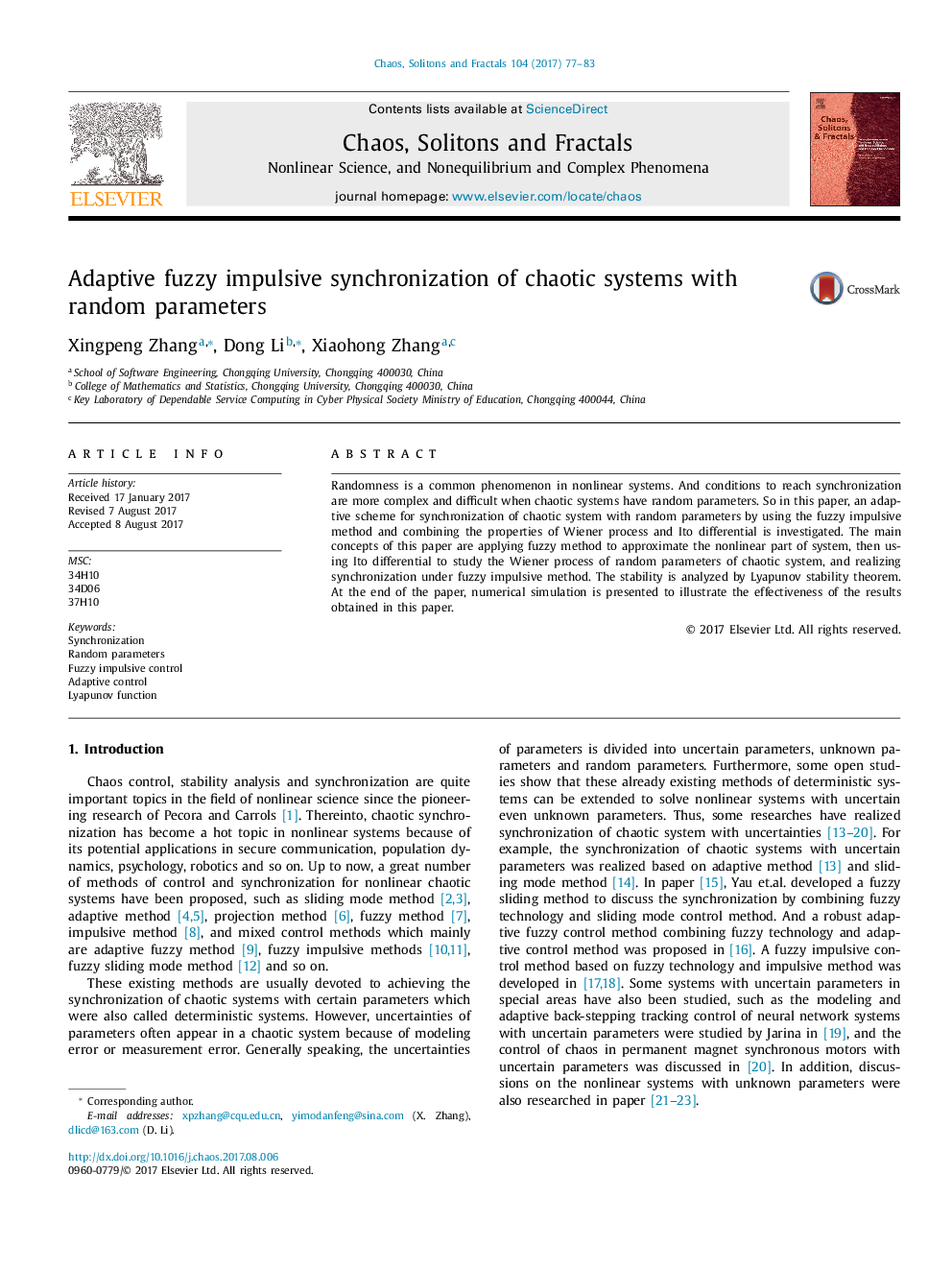ترجمه فارسی عنوان مقاله
همگام سازی تجمعی فازی تطبیقی سیستم های هرج و مرج با پارامترهای تصادفی
عنوان انگلیسی
Adaptive fuzzy impulsive synchronization of chaotic systems with random parameters
| کد مقاله | سال انتشار | تعداد صفحات مقاله انگلیسی |
|---|---|---|
| 122277 | 2017 | 7 صفحه PDF |
منبع

Publisher : Elsevier - Science Direct (الزویر - ساینس دایرکت)
Journal : Chaos, Solitons & Fractals, Volume 104, November 2017, Pages 77-83
ترجمه چکیده
تصادفی یک پدیده شایع در سیستم های غیر خطی است. و شرایط برای دستیابی به هماهنگ سازی پیچیده تر و دشوار است در هنگام سیستم های هرج و مرج دارای پارامترهای تصادفی. بنابراین در این مقاله یک طرح سازگار برای هماهنگ سازی سیستم هرج و مرج با پارامترهای تصادفی با استفاده از روش امپدانس فازی و ترکیب خواص فرآیند وینر و دیفرانسیل اتیو مورد بررسی قرار گرفته است. مفاهیم اصلی این مقاله، استفاده از روش فازی برای تقریب بخش غیرخطی سیستم، سپس با استفاده از دیفرانسیل اتیو به منظور مطالعه فرآیند وینر پارامترهای تصادفی سیستم هرج و مرج، و هماهنگ سازی در روش فشاری است. ثبات با قضیه ثبات لایاپانوف تحلیل می شود. در پایان مقاله، شبیه سازی عددی برای نشان دادن اثربخشی نتایج به دست آمده در این مقاله ارائه شده است.

